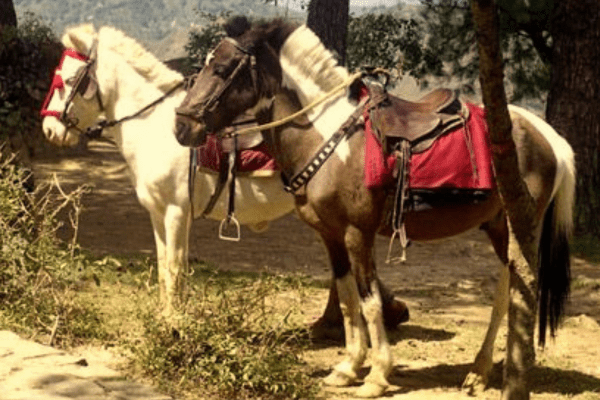Representing an exquisite blend of grace and ruggedness, Baguio Light Horses and Ponies from the Philippines are notable equine breeds known for their elegant forms and exceptional resilience against disease – an impressive testament to the rich, diverse equine lineage found within this region.
History:
“Baguio horses and ponies have long been iconic symbols of cultural amalgamation in the Philippines, embodying integration and resilience across generations. Their story weaves itself into its colorful tapestry as living testaments of adaptation, survival, and cultural cohesion.”
Origins: Baguio horses and ponies derive their origin from their diverse lineage originating in Chinese, Brazilian, and other South American traders who brought these breeds to the Philippines Islands. This global lineage gives these horses and ponies their distinct genetic make-up.
Natural Evolution: Once these early traders had left, their breeds were left on their own to adapt to their local environment, leading them to evolve into physically sound yet tough breeds well adapted to Philippine climate and terrain.
18th Century Boom: The 18th century saw horses flourishing throughout the nation. However, due to a lack of formal breeding programs they eventually saw their population diminish significantly.
Revival Through Bloodline Infusion: To combat this trend, breeders introduced Arabian and Spanish bloodlines into their breeding programs in order to rejuvenate them and increase numbers, thus guaranteeing their continued existence and continuity. This strategy not only helped develop physical traits such as endurance and refine their physical appearance but also ensured survival and continuity within these breeds.
Modern story of Baguio horses and ponies emphasizes their cultural importance and conservation:
Pony Boys of Baguio City: Today, these breeds of horses and ponies are being cared for by local experts known as ‘pony boys’ in Baguio City. Not only are these experts providing regular health checks on these species; but they are also essential in introducing tourists to horseback riding at Wright Park.
Cultural Integration: Baguio horses and ponies are not simply tourist attractions; they play an active part in Baguio’s cultural life as active participants. Each year at major festivals in which races and competitions showcase their grace and agility, the city-bred horses take centre stage as attractions for spectators to view.
Enduring Legacies: These breeds stand as testaments to the resilience and spirit of adaptation and survival that endure over generations. Their histories illustrate the complex interaction among nature, culture, history and animal ownership that define regions’ identities and heritages.

Physical Features:
Baguio horses and ponies, famous for their adaptability and resilience, also possess distinctive physical traits that set them apart from other breeds of equine species. Here’s a breakdown of their distinctive features.
Size and Build: Baguio horses and ponies tend to be smaller and more compact than many other horse breeds, making them especially adept at traversing the rugged terrain in the Philippines. Their sturdy builds include well-proportioned bodies with strong legs and hard hooves – ideal features in mountainous landscapes like Baguio.
Coat and Color: Highland breeds usually exhibit a range of coat colors, such as bay, black, chestnut or even occasionally dappled or grey. Their thick and lush coats serve to protect them against variable climate conditions found there.
Baguio horses and ponies often boast thick and flowing manes and tails, adding aesthetic value as well as acting as protective features against harsh conditions.
Head and Facial Features: They tend to possess well-defined head shapes with expressive eyes and well-set ears, often reflecting intelligence and attentiveness in their facial features.
Temperament: Baguio horses and ponies are well known for their hardiness, as well as their peaceful temperaments. Easy to train and handle, they make perfect candidates for leisure riding as well as participation in local festivals or events.
Adaptability: Perhaps one of the most remarkable qualities of these breeds is their incredible capacity for adaptation in different environments. Over time, they have evolved to be highly resilient creatures capable of flourishing even under challenging climate conditions in the Philippine highlands.

